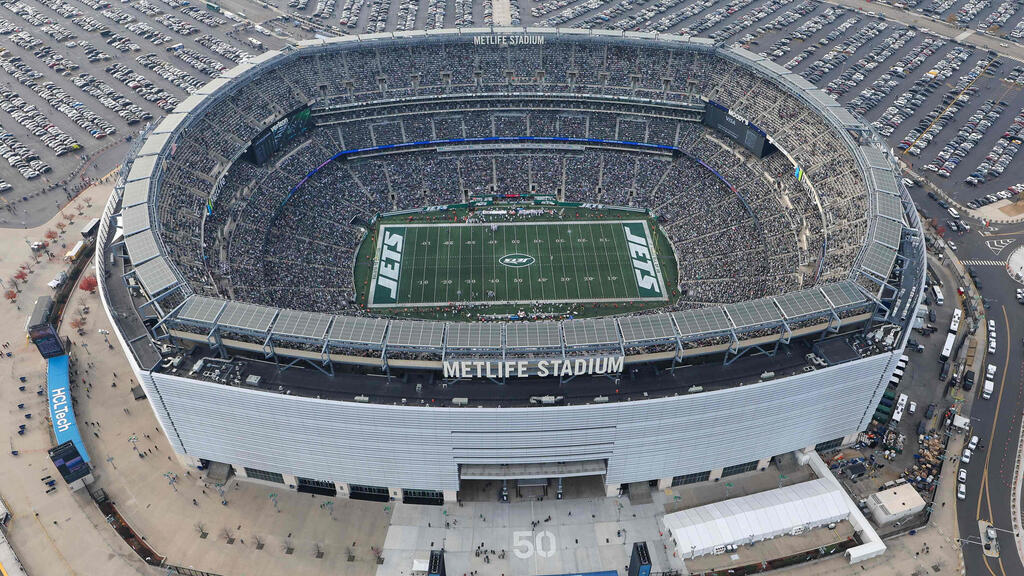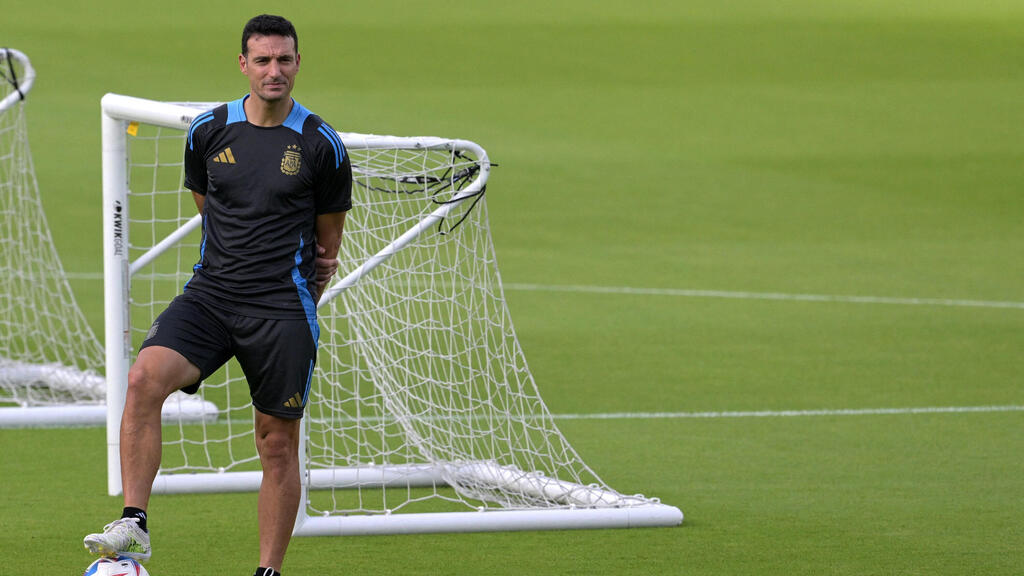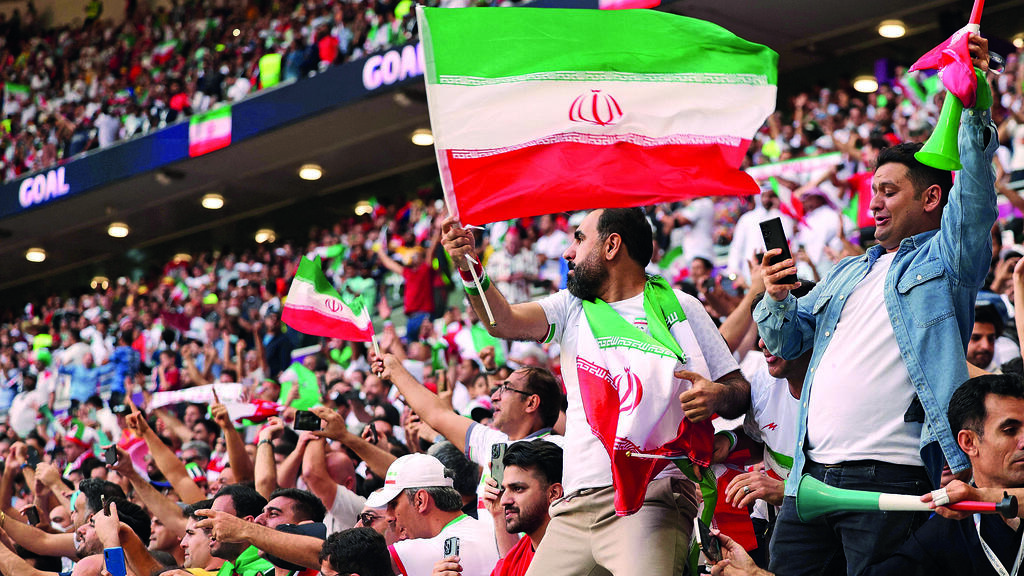On June 11, 2026, Mexico's iconic Estadio Azteca will erupt with joy as the Mexican national team opens the 2026 FIFA World Cup. Their passionate fans—some of the most devoted in the world—will witness the historic kickoff.
The Azteca is no stranger to football history. It hosted three of the most legendary World Cup matches 39 years ago during Mexico '86: On June 22, Diego Maradona scores both the controversial "Hand of God" goal and his iconic solo effort against England; on June 25, Maradona nets two more to eliminate Belgium in the semifinal and on June 29, Maradona lifts the trophy after Argentina’s 3–2 win over West Germany.
4 View gallery


U.S. President Donald Trump and FIFA President Gianni Infantino
(Photo: Anna Moneymaker/Getty Images)
Expectations for 2026's opener can't match those heights—and no one is expecting it to. Fans, players, commentators and even FIFA know the upcoming tournament, hosted jointly by Mexico, the U.S. and Canada, will be different. The expanded 48-team format, which debuts next summer, already has many hoping the World Cup won’t lose its soul.
FIFA, for its part, is unlikely to acknowledge concerns—even if the tournament flops. Instead, it’ll point to record-breaking stats, as the number of matches balloons from 64 to 104, including a new knockout round after the group stage. But ultimately, it’s viewers who will judge if the World Cup remains what it once was.
American gridiron, not soccer
Despite the scale of the event, most of which will take place in the U.S. (including the final in New Jersey), not everything is running smoothly. While it’s no Brazil 2014—where construction crews were still sipping coffee on half-built stadiums six months before kickoff—the U.S. doesn’t live and breathe football the way other countries do.
Last summer’s Copa America served as a warning, leaving FIFA anxious ahead of this week’s Club World Cup, which is being used as a trial run for 2026.
The U.S. stadiums may be massive but 11 of the 16 venues selected were built for American football, not soccer. The country’s largest soccer-specific stadium, in Nashville, only holds 30,000—10,000 short of FIFA’s minimum requirement.
The solution seems to be to retrofit NFL stadiums in cities like Dallas, Kansas City and Los Angeles to accommodate soccer. But it’s proving harder than expected.
Most American football stadiums use artificial turf (seven of the 11 U.S. venues), while FIFA mandates natural grass. While there’s time to swap surfaces between the end of the NFL season in February 2026 and the World Cup’s kickoff, it’s not straightforward.
Get the Ynetnews app on your smartphone: Google Play: https://bit.ly/4eJ37pE | Apple App Store: https://bit.ly/3ZL7iNv
As ESPN’s Lizzy Bejarano explained, stadiums in Atlanta, Miami, Seattle, Philadelphia and New Jersey weren’t designed for natural grass. Some have roofs that block sunlight, complicating grass growth. During last year’s Copa America, organizers laid natural sod on top of turf but it led to poor results.
The grass was patchy, uneven and sometimes tore during games. Argentina’s head coach Lionel Scaloni said the turf was spray-painted to appear greener than it actually was. After a match in Atlanta, he called the field “unfit for players of this level.” Others described it as a “trampoline,” a “disaster,” and “a hollow stage.”
A possible fix lies in a hybrid surface: natural grass interwoven with synthetic fibers, grown on plastic and laid atop a special drainage layer known as “Permavoid.” According to Henry Bushnell of Yahoo Sports, achieving FIFA-grade quality will take “an army working around the clock, robotic tractors and endless testing.”
Trump’s executive order adds another wrinkle
Issues extend beyond the pitch. On Monday, U.S. President Donald Trump’s new executive order banning entry from 12 countries came into effect. Three of those—Libya, Equatorial Guinea and Haiti—are still in contention for a World Cup spot. Iran has already qualified.
This could create political friction between the U.S. and FIFA if fans from these countries are denied entry. While athletes and staff are exempt from the ban, fans are not. Vice President J.D. Vance commented, “I know we’ll have visitors probably from close to 100 countries.
“We want them to come. We want them to celebrate. We want them to watch the game. But when the time is up they’ll have to go home. Otherwise they’ll have to talk to Secretary [Kristi] Noem.”
That’s just one of the many open questions troubling FIFA. As the Associated Press noted, there’s still no announced date for public ticket sales, no pricing details for most matches and no finalized locations for the group stage draw or team training camps.
When AP pressed Manolo Zubiria, FIFA’s chief tournament officer, for answers, he hung up after four minutes, unable to provide clear information.
Security planning also remains a concern. During last year’s Copa America, poor organization delayed the final match by 82 minutes. Ensuring safety across an entire continent for 104 matches in a single month is a monumental challenge—akin to staging over 100 Super Bowls back-to-back.
Beyond logistics and politics, one intangible question looms: Can the 2026 World Cup recapture the joy and street-level excitement that was missing in Qatar? With the tournament spread across vast distances and more teams than ever, the unique magic of simply qualifying could be lost.
And for all the dazzling stadiums and high-tech grass, the real measure of success may be something much harder to engineer: the atmosphere.





